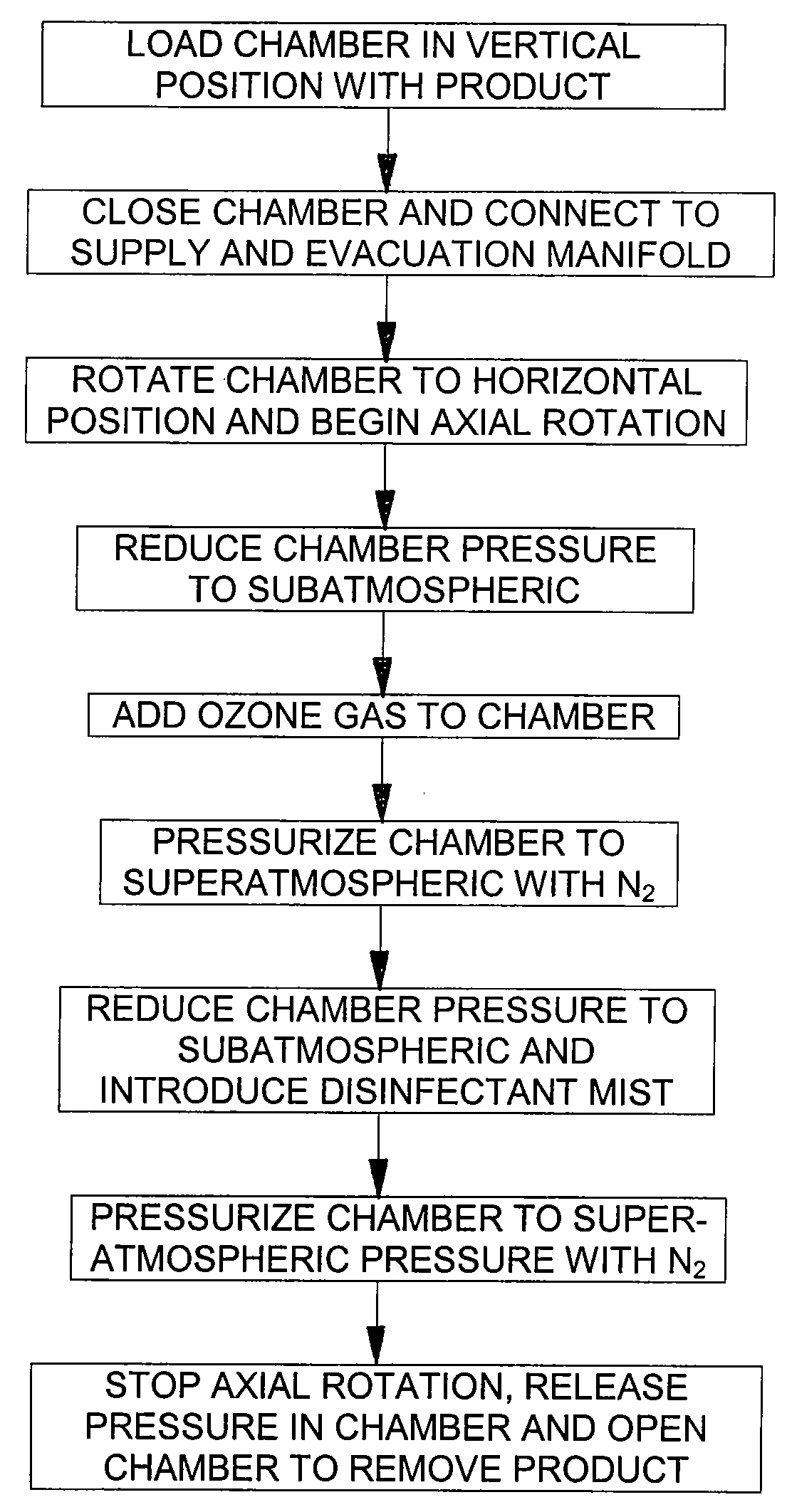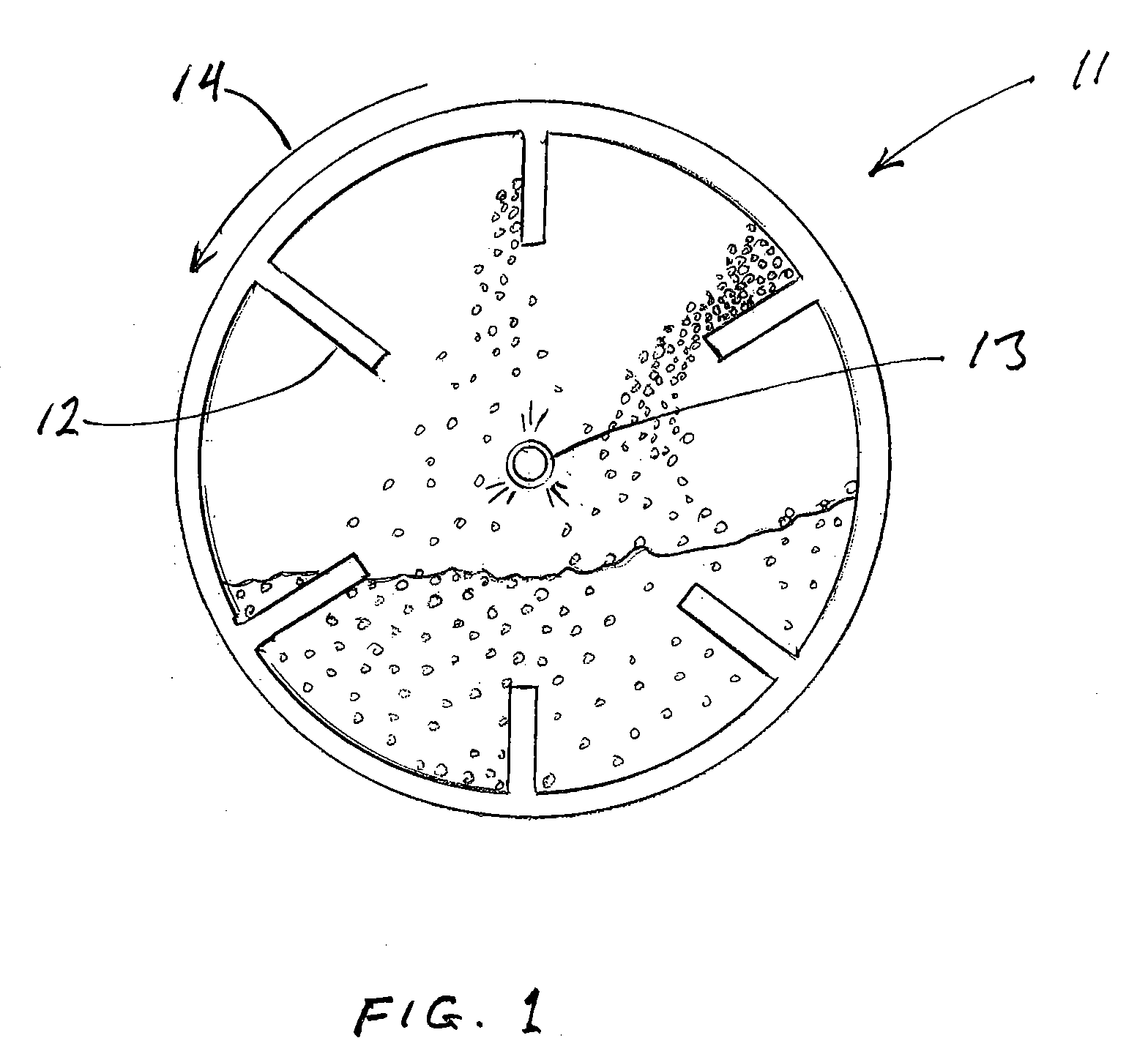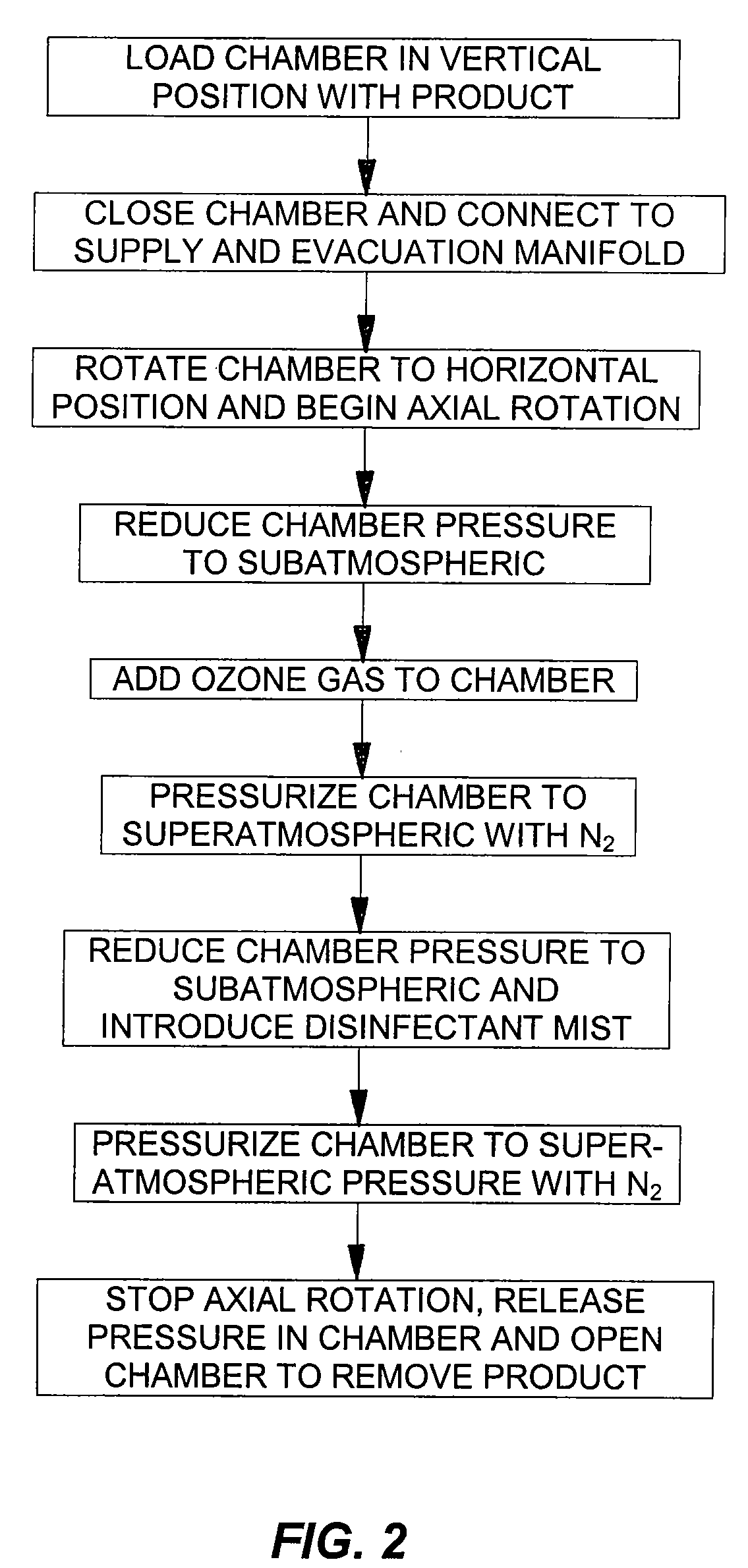Disinfection of dried foodstuffs
a technology applied in the field of food products and disinfection technology, can solve the problems of inaccessible treatment treatment surfaces, inability to achieve adequate disinfection, and product surfaces that are vulnerable to reinfestation
- Summary
- Abstract
- Description
- Claims
- Application Information
AI Technical Summary
Benefits of technology
Problems solved by technology
Method used
Image
Examples
example
[0019]A cylindrical stainless steel drum with tapered ends is used as the treatment chamber. The drum has a port at one end for both filling the drum and discharging material from the drum, with a removable hatch (i.e., closure) over the port. The drum interior is 8 feet (2.4 m) in length and 5 feet (1.5 m) in diameter. It is currently contemplated that drums ranging from 2 to 12 feet (0.6 to 3.7 m) in length and 1 to 10 feet (0.3 to 3 m) in diameter can be used. A cross section of the drum interior is shown in FIG. 1. The drum 11 contains six paddles 12 evenly spaced around the circumference of the drum, each paddle extending the full length of the drum in the axial direction (perpendicular to the plane of the drawing) and extending radially from the inner wall surface of the drum a third of the distance toward the drum axis. Positioned along the drum axis is a center pipe 13 through which all liquids and gases used during the treatment process enter the drum and through which the ...
PUM
 Login to View More
Login to View More Abstract
Description
Claims
Application Information
 Login to View More
Login to View More - R&D
- Intellectual Property
- Life Sciences
- Materials
- Tech Scout
- Unparalleled Data Quality
- Higher Quality Content
- 60% Fewer Hallucinations
Browse by: Latest US Patents, China's latest patents, Technical Efficacy Thesaurus, Application Domain, Technology Topic, Popular Technical Reports.
© 2025 PatSnap. All rights reserved.Legal|Privacy policy|Modern Slavery Act Transparency Statement|Sitemap|About US| Contact US: help@patsnap.com



